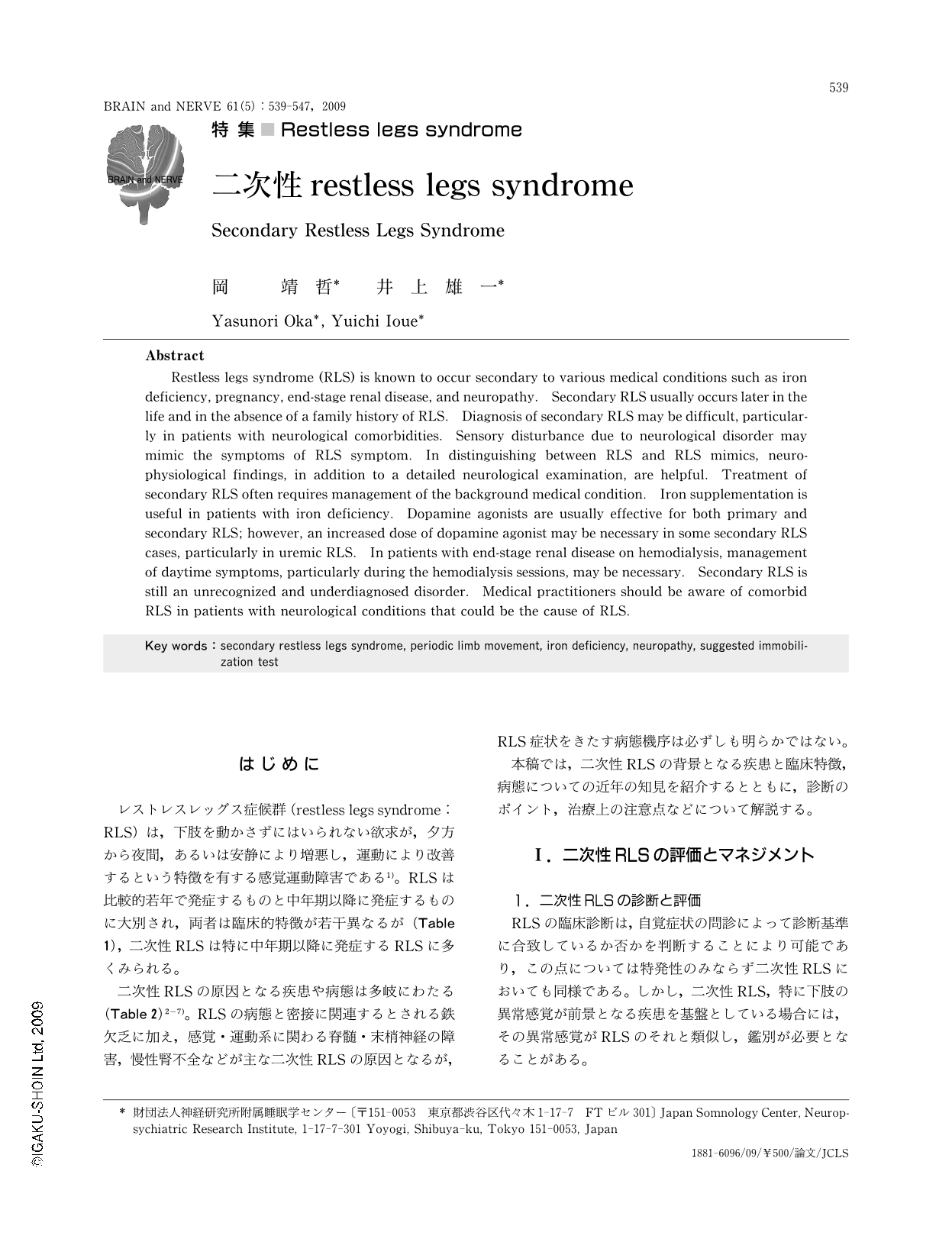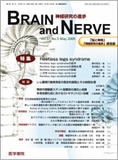Japanese
English
- 有料閲覧
- Abstract 文献概要
- 1ページ目 Look Inside
- 参考文献 Reference
はじめに
レストレスレッグス症候群(restless legs syndrome:RLS)は,下肢を動かさずにはいられない欲求が,夕方から夜間,あるいは安静により増悪し,運動により改善するという特徴を有する感覚運動障害である1)。RLSは比較的若年で発症するものと中年期以降に発症するものに大別され,両者は臨床的特徴が若干異なるが(Table1),二次性RLSは特に中年期以降に発症するRLSに多くみられる。
二次性RLSの原因となる疾患や病態は多岐にわたる(Table2)2-7)。RLSの病態と密接に関連するとされる鉄欠乏に加え,感覚・運動系に関わる脊髄・末梢神経の障害,慢性腎不全などが主な二次性RLSの原因となるが,RLS症状をきたす病態機序は必ずしも明らかではない。
本稿では,二次性RLSの背景となる疾患と臨床特徴,病態についての近年の知見を紹介するとともに,診断のポイント,治療上の注意点などについて解説する。
Abstract
Restless legs syndrome (RLS) is known to occur secondary to various medical conditions such as iron deficiency,pregnancy,end-stage renal disease,and neuropathy. Secondary RLS usually occurs later in the life and in the absence of a family history of RLS. Diagnosis of secondary RLS may be difficult,particularly in patients with neurological comorbidities. Sensory disturbance due to neurological disorder may mimic the symptoms of RLS symptom. In distinguishing between RLS and RLS mimics,neurophysiological findings,in addition to a detailed neurological examination,are helpful. Treatment of secondary RLS often requires management of the background medical condition. Iron supplementation is useful in patients with iron deficiency. Dopamine agonists are usually effective for both primary and secondary RLS; however,an increased dose of dopamine agonist may be necessary in some secondary RLS cases,particularly in uremic RLS. In patients with end-stage renal disease on hemodialysis,management of daytime symptoms,particularly during the hemodialysis sessions,may be necessary. Secondary RLS is still an unrecognized and underdiagnosed disorder. Medical practitioners should be aware of comorbid RLS in patients with neurological conditions that could be the cause of RLS.

Copyright © 2009, Igaku-Shoin Ltd. All rights reserved.


